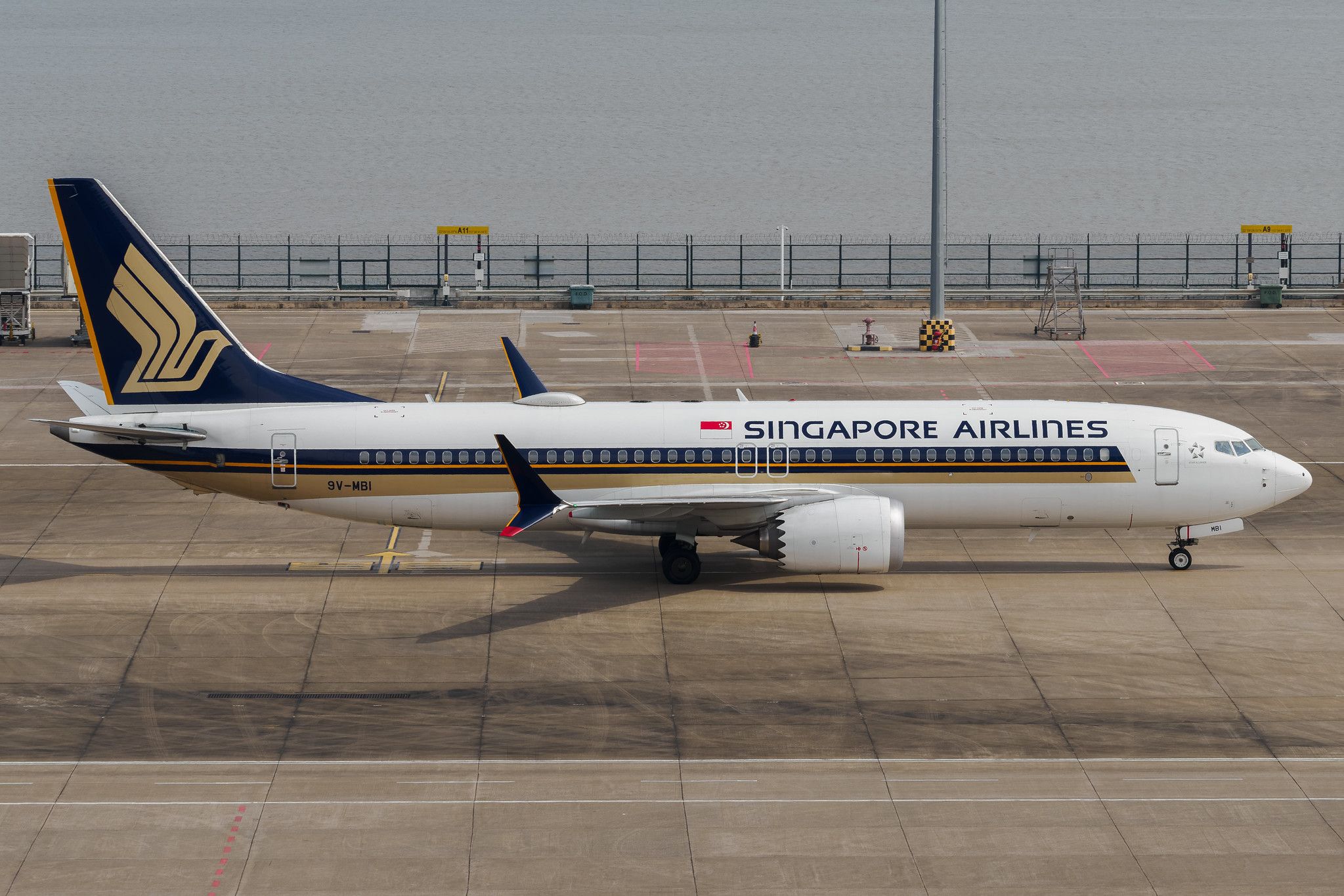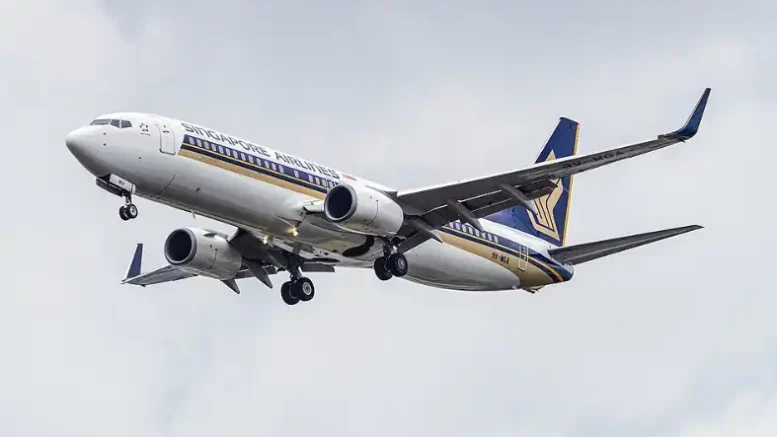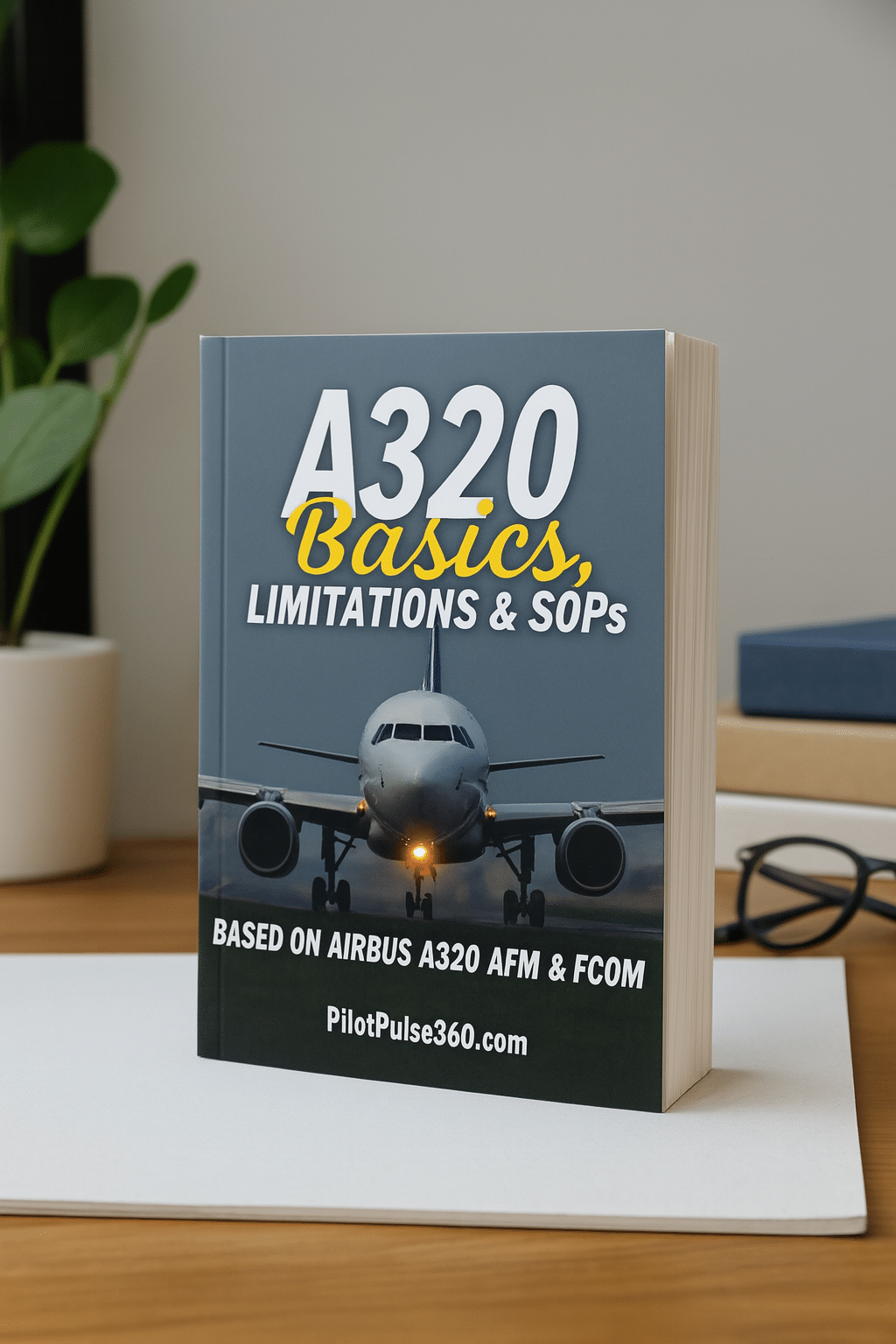Aviation News
Singapore Airlines Retires Final Boeing 737-800, Completes Premium Fleet Modernization
Singapore Airlines has retired its final Boeing 737-800, closing the SilkAir-era chapter and marking the completion of your carrier’s premium fleet modernization; the move eliminates older recliner Business Class seats and inconsistent amenities while replacing the type with an all-737-8 MAX narrow-body fleet. You now can expect a uniform, lie-flat Business product and full connectivity on every flight after a period where the global grounding of the 737 MAX delayed new arrivals. This standardization is a major positive for reliability, consistency and passenger experience.
Overview of Boeing 737-800 Retirement
With the final 737-800 (registration 9V-MGN) removed from service, you witness the close of the nine-aircraft batch Singapore Airlines inherited in 2021. Those jets bridged capacity during the 737 MAX grounding but lacked in-flight Wi‑Fi and seat-back KrisWorld and featured recliner Business seats. Replacing them with an all-737-8 MAX narrow-body fleet—now 19 aircraft in service with more on order—eliminates that product gap and standardizes the premium experience across your network.
Transition from SilkAir
After SilkAir’s full integration in 2021, you absorbed nine 737-800s that kept regional routes viable while MAX deliveries were delayed. They served as a functional stopgap but introduced inconsistent service levels compared with long-haul cabins. The final flight of 9V-MGN formally closed the SilkAir chapter, removing the last aircraft with older recliner Business seats and varying amenity offerings from your schedule.
Reasons for Fleet Modernization
You pursued modernization to achieve product uniformity, operational efficiency and improved economics: the 737-8 MAX delivers lie-flat Business seats, full connectivity and seat-back KrisWorld across routes, while standardizing on a single narrow-body type simplifies training and operations. With 19 737-8 MAX in service and more on order, the strategy aligns passenger experience and cost performance as the 737-800s exit.

On the operational side, you gain measurable savings and reliability: the 737-8 MAX offers about a 14% fuel burn improvement versus the older 737‑NG, lowering CO2 per seat and trip costs; fleet commonality reduces crew training hours, spare-parts inventory and maintenance complexity, which improves dispatch reliability. From a commercial angle, providing consistent lie-flat Business Class, in-flight Wi‑Fi and KrisWorld across regional and short-haul flights strengthens your premium positioning and supports higher yields on key routes.
Impact on Passenger Experience
With the 737-800s retired, you now encounter a uniform onboard product across the network: lie-flat Business Class on narrow-bodies, consistent seat-back KrisWorld and in-flight Wi‑Fi where available, and standardised service levels. This move removes mixed-experience surprises on regional hops and means your short flight offers the same digital connectivity and cabin comfort that previously appeared only on long-haul services.
Disparities in Previous Aircraft
Before the phase-out, you frequently faced uneven offerings: the nine ex-SilkAir 737-800s inherited in 2021 featured recliner-style Business seats, lacked seat-back KrisWorld and did not offer in-flight Wi‑Fi, producing a noticeably lower standard compared with mainline aircraft; the final example, 9V-MGN, has now been removed from service, ending those inconsistencies.
Introduction of New Amenities
Now your narrow-body flights operate on the Boeing 737-8 MAX fleet (19 in service), so you get full connectivity, seat-back entertainment and the same Business Class sleeping configuration found on longer routes, giving you predictable, premium amenities even on short sectors.
More specifically, you can expect lie-flat seats in Business on many regional MAX configurations, ubiquitous USB/AC power at most seats, and integrated KrisWorld libraries that sync with Singapore Airlines’ connectivity plans; airlines statistics show fleet standardisation reduces passenger complaints and improves on-time service perception, so your experience should feel both more modern and more reliable.
The New Fleet
You now fly on a fully standardized narrow-body operation built around the Boeing 737-8 MAX, giving you lie-flat Business seats, full inflight connectivity and a consistent cabin across all regional sectors; this eliminates the product gaps left by the ex-SilkAir 737-800s and brings improved fuel efficiency and range to your short- and medium-haul journeys.
Specifications of Boeing 737-8 MAX
You’re boarding an aircraft that measures about 39.5 m long, typically seats 162–178 passengers in single-aisle layouts, cruises near Mach 0.79 and reaches roughly 3,550 nm (≈6,570 km); powered by CFM LEAP-1B engines, it delivers roughly a 14% fuel-burn improvement over the previous generation while supporting modern cabin systems and connectivity.
Number of Aircraft in Operation
Right now you’ll find 19 Boeing 737-8 MAX in active service with Singapore Airlines, replacing the nine 737-800s inherited from SilkAir; additional MAX frames are on order to scale capacity and maintain a uniform passenger experience across the network.
Operationally, you can expect those 19 jets to dominate high-frequency regional routes—think Singapore–Kuala Lumpur and Singapore–Jakarta—while the airline staggers further deliveries to match demand, reduce maintenance complexity and consolidate pilot and cabin crew training around a single narrow-body type.
Implications for Singapore Airlines’ Brand
Consistency in Service Quality
With the final ex-SilkAir 737-800 (registration 9V-MGN) retired, nine inherited 737-800s are gone and every narrow-body now offers the same product you expect: lie-flat beds in Business, full in-flight Wi-Fi and seat-back KrisWorld onboard. This eliminates the patchwork experience that previously created customer confusion, so when you book Singapore Airlines you get a predictable, premium cabin regardless of route or aircraft type.
Enhancing Competitive Advantage
Standardizing on the 19 737-8 MAX fleet (with more on order) strengthens your carrier’s market position by delivering a uniform premium product on every regional and short-haul sector, making it easier for you to choose SIA over rivals who still operate mixed cabins or older recliner configurations.
Operationally, this move reduces complexity in crew training, maintenance and inventory management, and lets you market one clear value proposition: a fully premium narrow-body product. The fuel-efficient 737-8 MAX also lowers unit costs, enabling more competitive pricing or higher yield capture on Business fares, while retiring the nine 737-800s (finalized with 9V-MGN) removes service inconsistencies that previously undermined upsell and loyalty efforts.
Future of Singapore Airlines’ Fleet
With the final 737-800 (registration 9V-MGN) removed, you can expect the carrier to press ahead with a fully standardized narrow-body fleet centered on the 19 Boeing 737-8 MAX currently in service and additional MAX aircraft on order. This consolidation reduces cabin product variance across routes, and it also concentrates operational risk: single-type dependence improves efficiency but raises exposure if the type is grounded. Your flights will increasingly feature lie-flat regional Business seats and consistent in-flight connectivity as the network modernizes.
Planned Expansions
Rather than reintroducing legacy types, the airline is expanding capacity by adding more 737-8 MAX jets to replace the nine ex-SilkAir 737-800s inherited in 2021. You should expect route frequency growth across Southeast Asia and denser point-to-point links from Changi, using the MAX’s range to open thin long-regional sectors. Operationally, the focus is on fleet commonality to lower training, maintenance and turnaround times, directly supporting a uniform premium experience on every flight you take.
Sustainability Initiatives
Fleet renewal with the 737-8 MAX yields tangible environmental gains: Boeing reports the MAX family can deliver up to 14% lower fuel burn per flight versus the prior generation, so you’ll see lower CO2 per passenger on narrow-body sectors. The airline pairs new aircraft with operational measures—weight reduction, single-engine taxi, and optimized routings—to further trim emissions as part of its broader decarbonization roadmap.
More specifically, you’ll notice program-level moves such as targeted Sustainable Aviation Fuel (SAF) trials on selected routes and investments in ground operations electrification at Changi. The carrier tracks progress with measurable KPIs: fuel burn per seat-kilometer, SAF uptake percentage on demonstrator flights, and year-on-year CO2 intensity reductions. Together with the MAX fleet, these steps aim to cut the airline’s narrow-body emissions intensity while preserving your expected premium service levels.
Industry Reactions
Analysts and competitors framed the 737-800 retirement as a decisive move toward fleet commonality and brand clarity. With the final ex-SilkAir jet 9V-MGN removed and Singapore Airlines now operating 19 Boeing 737-8 MAX with more on order, you should expect lower fuel burn, simplified pilot training and fewer in-service variances. Trade outlets noted potential CASM improvement and welcomed the elimination of the product gap created by older recliner Business seats lacking Wi‑Fi and seat-back KrisWorld.
Perspectives from Aviation Analysts
Several analysts pointed to measurable fleet efficiencies: replacing nine inherited 737-800s with an all-737-8 MAX narrow-body fleet can cut fuel burn per seat by an estimated 10–15% on comparable sectors, reduce maintenance complexity and streamline crew rostering. You’ll hear investors flagging improved margins and lower capital risk as newer engines and avionics extend TBOs and resale value, while some urged monitoring remaining MAX delivery schedules to support network growth.
Customer Feedback
Frequent flyers and casual passengers reacted with relief: you now get lie-flat Business seats and in-flight Wi‑Fi on every Singapore Airlines narrow-body trip, ending the uneven experience caused by the nine ex-SilkAir recliner-configured 737-800s. Social channels treated the removal of 9V-MGN as symbolic, with many praising the carrier’s shift to a uniform premium product and clearer expectations for short-haul premium travel.
Passengers frequently flagged the lack of seat-back KrisWorld and onboard connectivity as the primary grievance—those ex-SilkAir jets offered recliner Business seats akin to US domestic First, not the long-haul lie-flat standard. You’ll notice fewer service complaints and more consistent booking expectations, and loyalty observers expect the standardization to reduce negative comparisons and help boost repeat bookings now that all narrow-body flights share the same digital and cabin experience.
Conclusion
Summing up, with the final Boeing 737-800 retired and the 737-8 MAX now the airline’s sole narrow-body type, you can expect a uniform, premium experience across all Singapore Airlines flights—lie-flat Business Class, full in-flight connectivity and standardized service—ensuring your short regional hops match long-haul product quality and brand consistency.
Frequently Asked Questions
Why is Singapore Airlines retiring the Boeing 737-800 fleet?
Singapore Airlines is retiring its remaining Boeing 737-800 aircraft in order to standardize its narrow-body fleet on the newer Boeing 737-8 MAX, and to deliver a consistent premium passenger experience. The 737-800s lacked full flat-bed business-class seats, did not have seat-back entertainment screens or Wi-Fi across the cabin, which hindered the carrier’s goal of a uniform onboard product. :contentReference[oaicite:2]{index=2}
When is the scheduled exit date for the 737-800s from SIA’s fleet?
The airline has indicated that the final 737-800 flights will likely occur around 25 October 2025, with full withdrawal by the end of lease expirations into early 2026 (the last aircraft are scheduled to be exited by the end of March 2026). :contentReference[oaicite:3]{index=3}
How many Boeing 737-800s remain in SIA’s fleet and what routes do they serve?
As of mid-2025, SIA had four Boeing 737-800s remaining (registrations 9V-MGK, 9V-MGL, 9V-MGM, 9V-MGN), all inherited from its merger with regional carrier SilkAir. These aircraft were deployed primarily on short-haul routes such as Penang and Kathmandu.
What fleet replacement is Singapore Airlines using to succeed the Boeing 737-800?
SIA is replacing the 737-800s with the Boeing 737-8 MAX (also referred to as 737 MAX 8), which offers improved fuel efficiency, modern cabin features including flat-bed business seats, seat-back entertainment, Wi-Fi connectivity, and a standardized product across the fleet.
What benefits will the retirement of the 737-800s bring to passengers and the airline?
The transition brings multiple benefits:
• All narrow-body aircraft will feature flat-bed business-class seats, completing SIA’s long-term promise to offer the same premium experience on every flight.
• Wi-Fi and seat-back in-flight entertainment will become standard across all flights in the narrow-body fleet, eliminating the legacy 737-800 gap.
• Operationally, fleet standardization reduces maintenance complexity, training overhead, and parts logistics, improving cost efficiency and schedule reliability.
How does this fleet move align with Singapore Airlines’ broader strategy?
The retirement of the 737-800s supports SIA’s strategy to maintain a young, efficient fleet, reduce structural cost base, deliver high-end service consistency, and position itself for future growth in regional connectivity. It also underscores the airline’s commitment to aligning its cabin products across wide-body and narrow-body aircraft.
What should passengers flying SIA’s short-haul network look out for in terms of aircraft type?
Passengers concerned about flying on older 737-800 equipment should check the aircraft type in booking details or use SIA’s flight-details tool. The airline’s booking engine labels the 737-800 as “Boeing 737-800 NG”. From late October 2025 onwards, all narrow-body flights will be operated on 737-8 MAX or other modern types.


